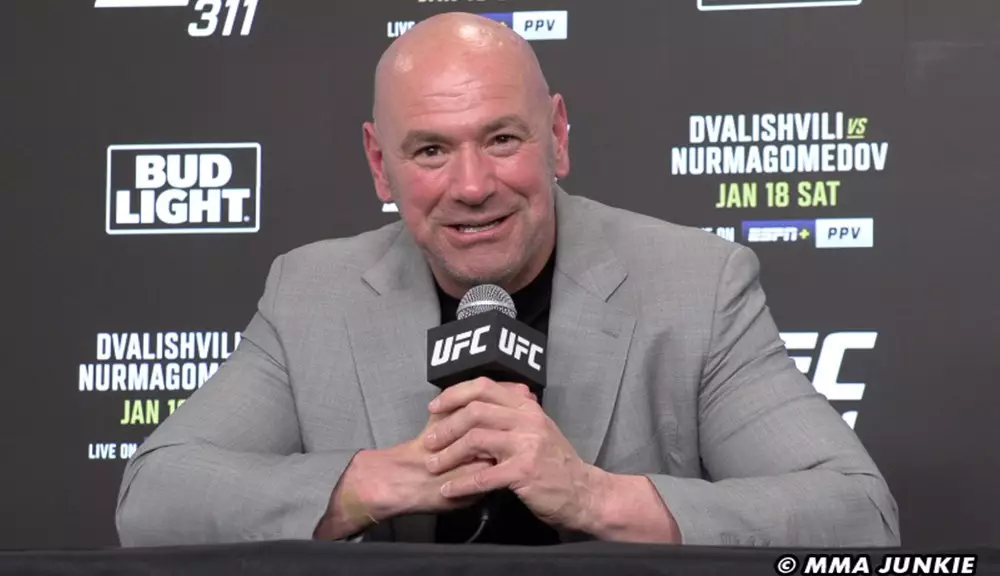In a landscape that has long been dominated by the Ultimate Fighting Championship (UFC), the emergence of the Global Fight League (GFL) has understandably stirred conversation within the mixed martial arts community. UFC CEO Dana White, however, remains unfazed by the potential competition the GFL presents. In recent comments, White expressed that he does not view the GFL as a concern for his organization. Instead, he pointed out that the GFL’s substantial financial backing could benefit fighters, a sentiment that signals a shift in the dynamics of combat sports.
White’s dismissive attitude towards the GFL reflects a broader trend where established organizations maintain confidence in their market position even amid new entrants. By framing the GFL as non-threatening, White is echoing a sentiment seen in other major league sports, where established brands often downplay new competitors. His focus is not on the GFL but rather on competing with larger entities like the NFL, college football, and mainstream entertainment such as blockbuster films. This illustrates a clear understanding of where true competition lies—in capturing the attention of sports fans amidst a crowded entertainment landscape.
While White may not perceive the GFL as a rival, the league is setting itself up for significant challenges. With an impressive roster featuring former UFC champions such as Chris Weidman, Luke Rockhold, and Tyron Woodley, the GFL aims to carve out a niche for itself by providing a team-based fighting experience. This unique approach could potentially attract a different audience compared to traditional individual competitions.
The GFL’s upcoming season, which is set to launch in April, includes drafting events and a structured format encompassing regular seasons, semifinals, and finals. This carefully orchestrated structure may entice both fans and fighters alike, offering them a new way to engage with the sport. As they seek to distinguish themselves from the UFC, the GFL’s team-based format may also appeal to viewers who enjoy camaraderie and collective competition.
The GFL’s financial capability, as noted by White, is noteworthy. If the promotion can maintain its investment levels, it could very well elevate the financial framework of the entire sports industry, improving compensation for fighters across the board. Increased competition drives up fighter salaries and offers more fighting opportunities, thereby benefiting athletes who often struggle to make a living solely through bouts.
By disregarding the GFL as a competitor, White demonstrates an astute recognition of the evolving landscape of combat sports. The risk of underestimation, however, is that emerging promotions may innovate and resonate with audiences in ways that established organizations cannot. Such dynamics can lead to unforeseen results, including shifts in viewership and sponsorship.
While Dana White may not view the Global Fight League as a threat, the ambition and potential of the new league should not be overlooked. As it seeks to provide fighters with new opportunities and engage fans through its unique team-based format, the GFL could significantly impact the combat sports sphere. The next few years will be crucial in determining how this narrative unfolds as the GFL and UFC coexist in an increasingly competitive environment.

